MG Antibiotic Risk Calculator
Personalized Antibiotic Risk Assessment
This tool helps you understand your risk when taking antibiotics with myasthenia gravis. The risk depends on both the antibiotic and your individual health factors.
Your Risk Assessment
When you have myasthenia gravis (MG), even a simple infection can turn dangerous. That’s because your body already struggles to send signals from nerves to muscles. Now add antibiotics into the mix - some of them can make muscle weakness worse, sometimes dangerously so. The real question isn’t whether to treat an infection, but which antibiotic to use without triggering a crisis.
What Happens When Antibiotics Interfere with MG?
Myasthenia gravis is an autoimmune disease where your immune system attacks the receptors on your muscles that normally respond to acetylcholine - the chemical that tells muscles to contract. With fewer receptors working, even small disruptions can cause big problems: drooping eyelids, trouble swallowing, weak arms, or even breathing failure.
Some antibiotics don’t just kill bacteria. They also mess with the nerve-muscle connection. They might block calcium channels that trigger acetylcholine release, or they might stick to the remaining receptors like a plug, stopping the signal completely. For someone without MG, this might go unnoticed. For someone with MG, it can mean the difference between recovering from pneumonia and ending up in the ICU.
Which Antibiotics Are Riskiest?
Not all antibiotics are created equal when you have MG. The risks vary widely by class, and some are far more dangerous than others.
- Aminoglycosides (like gentamicin, tobramycin) - These are the worst offenders. They directly block muscle receptors and can cause rapid, severe weakness. Avoid them unless there’s no other option - and even then, only under close monitoring.
- Fluoroquinolones (ciprofloxacin, levofloxacin, moxifloxacin) - These used to come with FDA black box warnings for MG patients. They’ve been linked to myasthenic crisis in multiple case reports. But new data shows the actual risk is lower than once thought - around 1.9% overall.
- Macrolides (azithromycin, clarithromycin, erythromycin) - Also once labeled high-risk, with a 1.5% exacerbation rate in one large study. Still, many doctors avoid them out of caution.
- Tetracyclines, trimethoprim-sulfamethoxazole, linezolid - These fall in the middle. Not safe to use casually, but not automatically off-limits if no better choice exists.
- Penicillins (amoxicillin, ampicillin, penicillin V) - These are the safest. Studies show only a 1.3% risk of worsening symptoms. Many experts now consider them first-line for MG patients with infections.
The biggest surprise? A 2024 study from the Cleveland Clinic, which looked at 918 antibiotic courses in 365 MG patients, found that fluoroquinolones and macrolides didn’t cause significantly more worsening than amoxicillin. That challenges decades of strict avoidance rules. But here’s the catch: it’s not about the drug alone - it’s about who’s taking it.
Who’s Most at Risk?
Not every MG patient reacts the same way. Certain factors make antibiotic-triggered weakness much more likely:
- Recent hospitalization or ER visit - If you’ve been in the hospital or ER for MG in the last six months, your risk jumps. Your body is already on edge.
- Being female - Women with MG are more likely to have an exacerbation after antibiotics, though the reason isn’t fully understood.
- Having diabetes - This condition seems to make nerve-muscle signaling even more fragile under antibiotic stress.
If you fall into one of these groups, your doctor should treat you differently. Even a low-risk antibiotic like amoxicillin might need extra monitoring. For high-risk patients, avoiding fluoroquinolones and macrolides altogether is still the wisest move - especially if there’s a safe alternative.
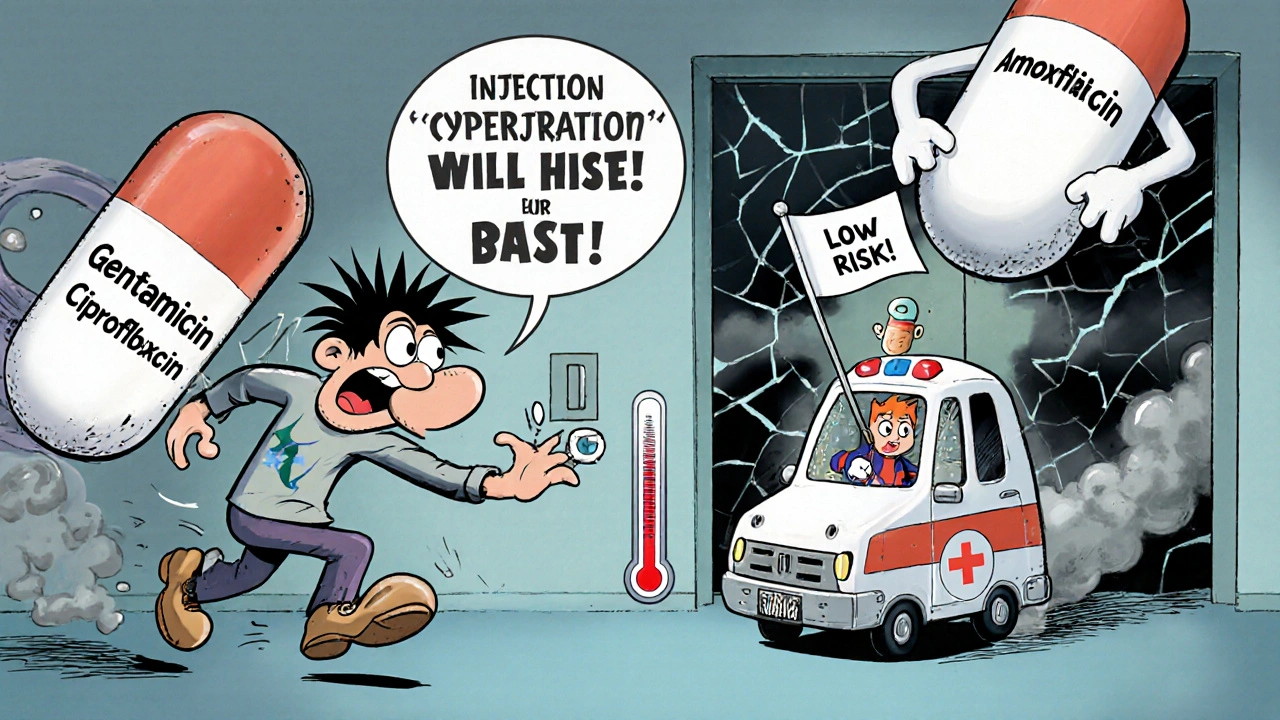
Why Infection Itself Is the Real Enemy
Here’s the twist: in 88.2% of cases where MG worsened after an antibiotic, the real culprit wasn’t the drug - it was the infection. A urinary tract infection, pneumonia, or sinusitis can trigger a flare all on its own. Left untreated, that infection could lead to respiratory failure faster than any antibiotic.
This creates a brutal dilemma: treat the infection and risk a drug reaction, or avoid the drug and risk the infection. The answer isn’t to skip antibiotics. It’s to choose the safest one, and treat the infection quickly.
Delaying treatment because you’re afraid of antibiotics can be more dangerous than using them. A 2023 NIH study found that 6 patients had full myasthenic crises after antibiotics - but 9 others needed emergency rescue therapy because their infection was untreated. Infection was the trigger in nearly all cases.
What Should You Do?
If you have MG and need an antibiotic, here’s what actually works in real life:
- Always tell every doctor and pharmacist you have MG - Even if it’s your dentist or urgent care. Put it in your medical records. Many cases of bad reactions happen because no one knew.
- Ask: "Is there a safer option?" - Start with penicillins like amoxicillin. They’re effective for many common infections and carry the lowest risk.
- If a higher-risk antibiotic is needed, monitor closely - Watch for new weakness in your arms, legs, eyelids, or breathing. If you feel worse in the first 72 hours, call your neurologist immediately. Don’t wait.
- Don’t self-prescribe - Even over-the-counter antibiotics (like some topical ones) can be risky. Always get professional advice.
- Work with your MG specialist - The Myasthenia Gravis Foundation of America says it clearly: talk to your MG specialist before taking any new antibiotic. They know your history, your triggers, and your treatment plan.
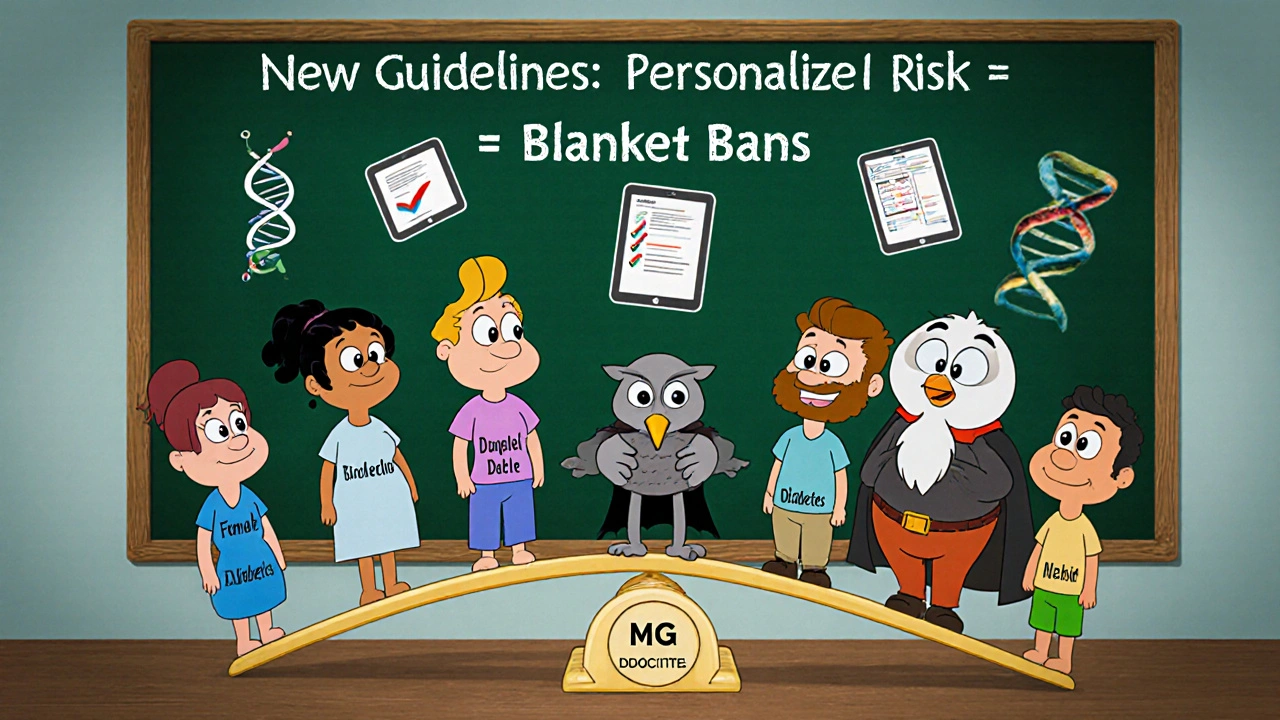
What’s Changing in Medical Guidance?
For years, guidelines told MG patients to avoid fluoroquinolones and macrolides completely. That advice came from small case reports and fear, not solid data. Now, the largest study ever done on this topic (the 2024 Cleveland Clinic research) shows the risk is real - but not as high as we thought.
Doctors are starting to shift. Instead of blanket bans, they’re moving toward personalized risk assessment. If you’re stable, have no recent hospital visits, and have no diabetes - your doctor might feel comfortable prescribing levofloxacin for a stubborn sinus infection, knowing the odds are low and the benefit is high.
But that doesn’t mean everyone can take the same risk. The guidelines are becoming more nuanced. The Myasthenia Gravis Foundation of America still lists fluoroquinolones as "cautious use, if at all," and telithromycin as absolutely off-limits. Their caution is based on real tragedies. But now, there’s room for judgment.
What’s Next?
Researchers are now looking for answers to deeper questions:
- Are there genetic markers that make some MG patients more sensitive to certain antibiotics?
- Can we build a digital tool that tells doctors, "Based on this patient’s age, sex, recent hospitalizations, and infection type, here’s the safest antibiotic"?
- Will future guidelines finally update to reflect real-world data instead of old warnings?
One thing is clear: the old rule of "avoid all fluoroquinolones and macrolides" is fading. The new rule is: "Know your risk, choose wisely, and never delay treatment for a real infection."
Can I take amoxicillin if I have myasthenia gravis?
Yes, amoxicillin is considered one of the safest antibiotics for people with myasthenia gravis. Studies show only a 1.3% chance of worsening symptoms, making it a preferred choice for common infections like sinusitis, strep throat, or urinary tract infections. It doesn’t interfere with nerve-muscle signaling the way some other antibiotics do.
Are fluoroquinolones like ciprofloxacin always dangerous for MG patients?
Not always - but they carry a higher risk. Fluoroquinolones like ciprofloxacin and levofloxacin have been linked to MG worsening in some cases, with an overall risk of about 1.9%. However, recent large studies show this risk isn’t much higher than safer options like amoxicillin. The key is patient-specific factors: if you’ve been hospitalized recently, are female, or have diabetes, avoid them. If you’re stable and have no other risks, your doctor might still use them when no better alternative exists - but only with close monitoring.
What should I do if I feel weaker after starting an antibiotic?
Call your neurologist or go to the emergency room immediately. Worsening weakness - especially in your breathing, swallowing, or eyelids - could signal a myasthenic crisis. Don’t wait. This is a medical emergency. Bring a list of all your medications, including the new antibiotic, and tell them you have myasthenia gravis.
Can infections themselves make myasthenia gravis worse?
Yes - and they’re actually the most common cause of MG worsening. In nearly 9 out of 10 cases where symptoms got worse after taking an antibiotic, the real trigger was the infection itself, not the drug. That’s why treating infections quickly is critical. The goal isn’t to avoid antibiotics at all costs - it’s to pick the safest one and treat the infection before it triggers a flare.
Should I avoid all antibiotics if I have MG?
No. Avoiding antibiotics because you’re afraid of side effects can be more dangerous than using them. Untreated infections can cause respiratory failure, sepsis, or death. The key is smart selection: use low-risk antibiotics like penicillins when possible, avoid known high-risk drugs like aminoglycosides, and always inform your doctors about your MG. Treatment is possible - and necessary - with the right approach.
Do I need to tell every doctor I see that I have MG?
Absolutely. Many reactions happen because a doctor doesn’t know you have MG. Even if you’re seeing a dentist, urgent care provider, or pharmacist, make sure they know. Ask them to note it in your chart. Some patients carry a medical alert card or app listing their condition and drug restrictions - that’s a smart precaution.
Is there a list of antibiotics I should never take?
Yes. Aminoglycosides (gentamicin, tobramycin) are the most dangerous and should be avoided unless there’s no other choice. Telithromycin is absolutely contraindicated and carries a black box warning. Fluoroquinolones and macrolides require caution - they’re not banned, but they need careful review. Always check with your MG specialist before starting any new antibiotic, even if it’s "common."
Final Thought
You don’t have to live in fear of every antibiotic. But you do need to be informed. Myasthenia gravis is complex, and infections are a real threat. The best defense isn’t avoidance - it’s knowledge. Know your risk factors. Know your safe options. Know when to call for help. With the right plan, you can treat infections safely - and keep your muscles strong.

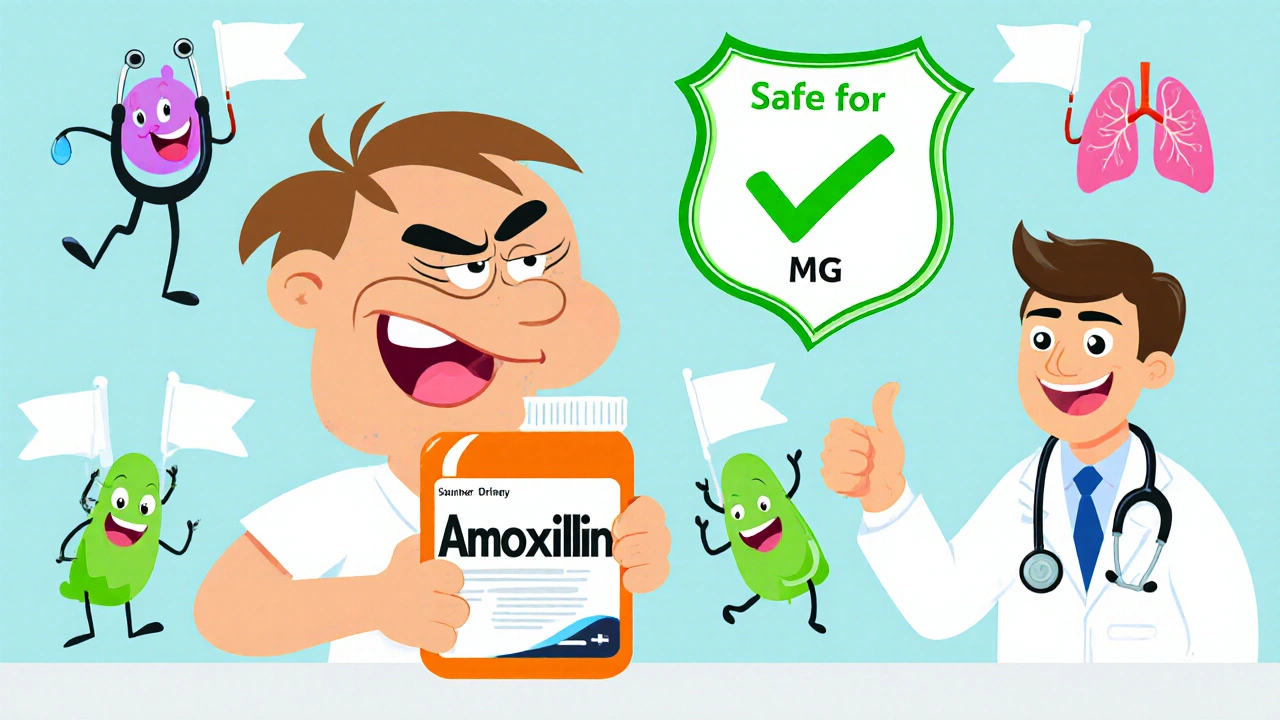
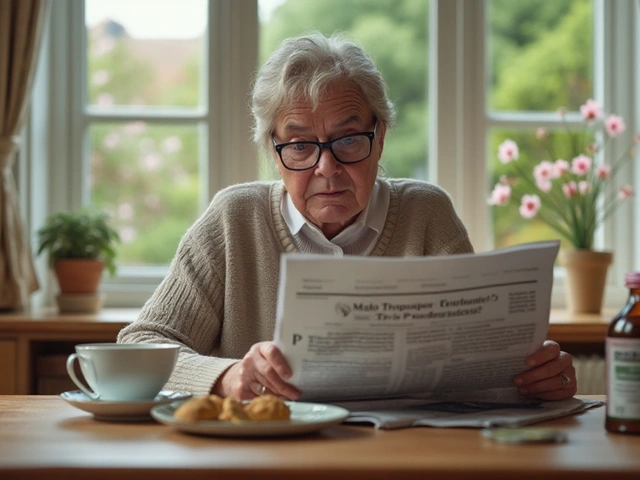

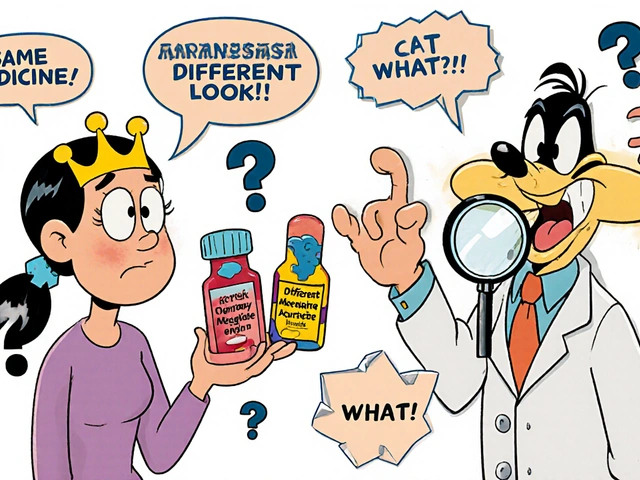
Anne Nylander
November 22, 2025 AT 03:55OMG I JUST GOT PRESCRIBED AMOXICILLIN FOR A SINUS INFECTION AND I WAS FREAKING OUT 😭 THANK YOU FOR THIS POST!! I FEEL SO MUCH BETTER KNOWING IT’S SAFE!!
Franck Emma
November 23, 2025 AT 19:03They’re lying. Fluoroquinolones killed my cousin. Don’t trust the ‘new data.’
Noah Fitzsimmons
November 25, 2025 AT 06:58Oh wow, so the medical establishment finally caught up to the fact that ‘avoid all macrolides’ was just fear-mongering? Took ‘em long enough. Meanwhile, I’m over here with my amoxicillin and a side of sarcasm.
Eliza Oakes
November 26, 2025 AT 17:08Wait, so now we’re supposed to trust a 2024 study from Cleveland Clinic over decades of clinical wisdom? What’s next? ‘Maybe aspirin doesn’t cause Reye’s syndrome?’
Corra Hathaway
November 28, 2025 AT 10:52YESSSSSSS! Finally someone says it: INFECTION IS THE REAL ENEMY 💪 Don’t let fear stop you from living! I’ve been on amoxicillin 3x since my MG diagnosis and still walking! You got this, fam! 🙌
Shawn Sakura
November 30, 2025 AT 00:17thank you for sharing this. i have mg and i was so scared to take any antibiotic. now i feel more confident. i will tell every doctor. even my dentist. thank you thank you thank you.
Donald Frantz
November 30, 2025 AT 01:37The 1.9% risk figure for fluoroquinolones is misleading. It doesn’t account for delayed onset or cumulative effects. I’ve seen three cases where weakness appeared 10 days post-treatment. The study is flawed. Don’t be fooled by statistics.
Sammy Williams
December 1, 2025 AT 10:12My neurologist just told me the same thing last week. Amoxicillin is fine. If I’m really sick, he’ll go with cipro but only if I’m in the clinic for daily check-ins. Makes sense. No need to panic, just be smart.
Nikhil Purohit
December 2, 2025 AT 23:23As someone from India, I’ve seen so many patients get aminoglycosides because they’re cheap. This is a global issue. Not everyone has access to amoxicillin. We need better guidelines for low-resource settings too.
Michael Marrale
December 3, 2025 AT 11:15Did you know the FDA is being controlled by Big Pharma to push fluoroquinolones? They know these drugs cause MG crises but they don’t care because they make billions. Wake up.
David vaughan
December 4, 2025 AT 15:55I’ve been stable for 7 years. Took levofloxacin last winter for bronchitis. No issues. But I told my neurologist. I monitored. I rested. I didn’t just ‘wing it.’ This isn’t about fear. It’s about responsibility.
David Cusack
December 6, 2025 AT 10:20One must question the methodological rigor of the Cleveland Clinic study: selection bias, lack of longitudinal tracking, and insufficient stratification by MG subtype. The data, while suggestive, is insufficient to overturn established clinical prudence.
Cooper Long
December 7, 2025 AT 05:52Medical guidelines must evolve with evidence. The shift from blanket avoidance to risk-stratified prescribing reflects mature clinical reasoning. Patients benefit from informed autonomy, not fear-based dogma.
Sheldon Bazinga
December 8, 2025 AT 08:19USA doctors are too soft. In my country we just give cipro and tell people to suck it up. If you can’t handle an antibiotic you shouldn’t have MG. Weak people need to get stronger.
Kartik Singhal
December 9, 2025 AT 05:09LOL look at all these Americans stressing over antibiotics. In India, we just take whatever the pharmacy gives us. If you get weaker? Maybe you were gonna get weaker anyway. 😎💊